Q
perodua aruz how many seater
The Perodua Aruz is a 7-seater SUV that's a perfect fit for Malaysian families. Its roomy cabin and three-row seating setup easily accommodate seven passengers, making it ideal for group outings or family trips. The Aruz features a 2+3+2 seating configuration – the second row splits 60:40 and the third row 50:50, giving you flexible cargo space to adapt to whatever you need to haul that day.
Under the hood, you'll find a 1.5L Dual VVT-i engine paired with a 4-speed automatic transmission. It delivers smooth power and impressive fuel efficiency, handling both city commutes and highway drives like a champ. Safety-wise, Perodua didn't skimp – it comes with ABS, EBD, brake assist, and dual airbags to keep everyone protected on the road.
As Perodua's SUV offering, the Aruz has won over Malaysian buyers with its practicality, dependability, and great value for money. It's especially popular with families who need extra space and versatility without breaking the bank. If you're in the market for an affordable, do-it-all 7-seater SUV, the Perodua Aruz should definitely be on your shortlist.
Special Disclaimer: This content is published by users and does not represent the views or position of PCauto.
Related Q&A
Q
How many km per liter is Aruz?
The actual measured fuel consumption of the Aruz is 22 liters per 100 kilometers. After conversion, the vehicle can travel approximately 4.55 kilometers per liter. Its official combined fuel consumption is 6.41 liters per 100 kilometers, meaning it can travel about 15.6 kilometers per liter.
In actual driving, the vehicle's fuel consumption is affected by various factors such as driving style, road conditions, and vehicle load. The specific kilometers traveled per liter may vary. For example, situations like rapid acceleration, sudden braking, and long-term traffic jams will increase fuel consumption, and the kilometers traveled per liter will decrease accordingly. On the other hand, good driving habits such as smooth driving and maintaining an appropriate speed can help improve fuel economy and increase the kilometers traveled per liter.
Q
Is Aruz ladder frame?
The Perodua Aruz features a monocoque chassis instead of a ladder frame. This design, commonly found in modern SUVs, offers better road-driving stability and riding comfort. At the same time, it reduces the vehicle's weight to improve fuel efficiency. As a 7-seat SUV targeting family users, the Aruz's monocoque structure is more suitable for daily urban commuting and long-distance travel, balancing spatial practicality and handling flexibility.
It's worth noting that ladder frames are mostly used in hardcore SUVs or pickups that emphasize off-road capabilities, such as the Toyota Hilux. These vehicles are characterized by strong torsional resistance and easy maintenance, but they offer poor comfort on the road. When Malaysian consumers choose a vehicle, they can make a decision based on their own needs. If the vehicle is mainly for urban use, a monocoque chassis is more appropriate. If they often encounter rough terrains, ladder-frame vehicles have more advantages.
As a local brand, Perodua has fully considered the road conditions in Malaysia and users' habits in the design of the Aruz. Its chassis tuning not only ensures comfort but also allows it to handle light unpaved roads.
Q
What kind of engine is in Perodua Aruz?
The Perodua Aruz is equipped with a 1.5-liter Dual VVT-i naturally aspirated gasoline engine, coded as 2NR-VE. This engine is provided by Perodua's partner, Toyota. It adopts the Dual Variable Valve Timing-intelligent (Dual VVT-i) technology, which can optimize fuel efficiency and power output. The maximum power is 77 kilowatts (104 horsepower), and the peak torque is 136 Nm. It is paired with a 4-speed automatic transmission or a 5-speed manual transmission, suitable for daily urban driving and light off-road needs. This engine has shown stable performance in the Malaysian market and is favored by consumers for its reliability and low maintenance cost. The Dual VVT-i technology improves combustion efficiency, reduces fuel consumption, and at the same time cuts emissions by adjusting the opening times of the intake and exhaust valves, meeting environmental protection standards. For Malaysian consumers, the engine configuration of the Aruz offers high cost-effectiveness among similar models, especially suitable for family use, balancing power and economy. Moreover, compared with turbocharged engines, naturally aspirated engines have a simpler structure and lower maintenance costs, making them a great choice for users who value practicality.
Q
How much is a Perodua Aruz battery?
The battery price of the Perodua Aruz usually ranges between RM200 and RM400, specifically depending on the battery brand, model, and where you purchase it. The price of the original-factory battery will be slightly higher, while third-party brands like Bosch, Amaron, or Century may offer more cost-effective options. It is recommended that car owners choose a battery with specifications that match their vehicle when replacing the battery. For example, common models such as 44B20L or 55D23L can ensure compatibility and performance.
In addition, regularly checking the battery status and keeping the charging system operating normally can extend the battery life. Generally, the lifespan of a car battery is around 2 to 3 years, but the actual usage time will be affected by driving habits and climatic conditions. If you find it difficult to start the vehicle or the lights are dimming, it may be a sign of battery aging, and you should check or replace it in time.
In Malaysia, many car repair centers or battery specialty stores offer free testing and installation services. Before making a purchase, you can compare the prices and services of several stores to get the most suitable solution.
Q
Which country made Perodua Aruz?
The Perodua Aruz is manufactured by Perodua, a local Malaysian automotive brand. It's a seven-seat SUV specifically designed for the Malaysian market. Since its launch in 2019, it has won the favor of many family users thanks to its spacious interior and practicality. As a Made-in-Malaysia vehicle, the Perodua Aruz is assembled locally, which shows Perodua's emphasis on meeting the needs of Malaysian consumers. Its design and functions are optimized for Malaysian road conditions and family use. For instance, the high ground clearance makes it suitable for rural roads, and the fuel-efficient 1.5L Dual VVT-i engine takes into account daily economy.
It's worth mentioning that Perodua, as the second-largest car manufacturer in Malaysia, has long-term partnerships with Japanese automakers Toyota and Daihatsu. So, it has advantages in technology sharing and quality control. The Aruz incorporates some proven technologies from its partners. For example, it shares the platform with the Toyota Rush, but the configuration and pricing strategies are adjusted for the Malaysian market, making it a highly cost-effective choice.
For Malaysian consumers who value practicality and budget, the Aruz offers a solution that meets local needs. At the same time, it also demonstrates the progress of local cars in R & D and manufacturing.
Q
Is Aruz 6 seater?
The Perodua Aruz is a 7-seater SUV designed for family use, featuring a 2+3+2 seat layout. So, strictly speaking, it's not a 6-seater model. However, if you fold the third-row seats, it can be transformed into a 5-seater configuration. This vehicle is equipped with a 1.5L Dual VVT-i engine paired with a 4-speed automatic transmission, focusing on economic practicality and high cost-effectiveness. Its width of 2,025mm and length of 4,075mm offer relatively spacious seating space, which is especially suitable for the medium-and short-distance travel needs of multi-member families in Malaysia.
It's worth noting that 7-seater models are quite popular in the Malaysian market, mainly due to the local family structure and usage habits. Compact SUVs like the Aruz combine the flexibility of urban commuting and the convenience of occasional passenger-carrying. When consumers are making a purchase, they can compare the space utilization differences with similar models in the same class, such as the Proton X70 or the Toyota Rush. At the same time, it is recommended to take a test drive to experience whether the legroom in the third row meets your needs, as the vehicle's size directly affects the comfort during long-distance rides.
Q
Is Perodua Aruz an MPV?
The Perodua Aruz is indeed classified as a compact MPV (Multi-Purpose Vehicle). It's built on the Toyota Rush platform and features a three-row, seven-seat layout, making it suitable for families or consumers who need more passenger space. The Aruz's body dimensions and relatively high ground clearance also endow it with certain SUV characteristics. However, its official positioning still focuses on MPV functionality, emphasizing practicality and space flexibility.
In the Malaysian market, the Aruz has become the top choice for many families, thanks to Perodua's brand advantage of high cost-effectiveness and low maintenance costs. MPV models are particularly popular locally because they can meet both daily commuting and weekend family travel needs. The Aruz is also equipped with safety features such as the ASA (Advanced Safety Assist) driving assistance system, which further enhances its competitiveness.
If users are considering an MPV but occasionally need to tackle light unpaved roads, the Aruz's crossover design is a better fit than traditional MPVs. However, it should be noted that the third-row space is more suitable for children or short-distance rides. When Malaysian consumers are choosing a car, they can comprehensively consider factors like the number of seats, fuel consumption (the Aruz is powered by a 1.5L Dual VVT-i engine), and their budget. They can also compare it with models in the same class, such as the Proton Exora or Toyota Avanza. Ultimately, the choice depends on personal needs and preferences.
Q
What kind of gearbox is Perodua Aruz?
The transmission types of Perodua Aruz vary across different model years. For models produced between 2019 and 2021, the transmission type is AT (4-speed electronically controlled automatic transmission system E-AT). This type of transmission has a relatively complex internal structure. It uses planetary gears to achieve speed changes and torque conversion, which results in higher R & D and production costs. However, it offers good shifting comfort, reliability, and durability.
As for the 2023 Aruz model, the transmission type has been upgraded to CVT. A CVT transmission enables the vehicle to shift gears smoothly during driving, providing a better driving experience. Moreover, it can help improve fuel economy to a certain extent.
Q
When was Aruz launched?
The Perodua Aruz is a seven-seater SUV officially launched in the Malaysian market on January 15, 2019. As the first model of the Perodua brand built on the DNGA (Daihatsu New Global Architecture) platform, it targets the family user market, offering spacious seating and practical functionality.
The Aruz is equipped with a 1.5-liter dual VVT-i naturally aspirated engine, paired with a 4-speed automatic transmission, delivering affordable fuel performance. At the same time, it comes with advanced safety features such as the ASA 2.0 (Advanced Safety Assist) system, which includes functions like pre-collision warning and lane departure warning, making it suitable for family users who prioritize safety.
The launch of this vehicle has enriched Perodua's product line in the SUV market. It competes with models like the Honda BR-V and Proton X70 but attracts consumers with a more affordable price and lower maintenance costs.
The Aruz has received a positive response in the Malaysian market and has become one of the top choices for many families. Its durability and practicality are widely recognized, making it suitable for Malaysia's diverse road conditions and family travel needs.
Q
Who are Perodua Aruz competitors?
As a popular 7-seater SUV in the Malaysian market, the main competitors of the Perodua Aruz include models such as the Proton X70, Honda BR-V, and Toyota Rush. The Proton X70 has attracted many family users with its high cost-effectiveness and rich configurations. Meanwhile, the Honda BR-V has occupied a certain market share with its excellent fuel economy and strong brand reputation. The Toyota Rush, with its reliable durability and high ground clearance, is suitable for consumers who love outdoor activities. These models directly compete with the Aruz in terms of price, space, and functions. However, the Aruz's advantage lies in its low maintenance cost and Perodua's extensive after-sales service network, which is quite appealing to Malaysian consumers who value practicality. In addition, the Aruz is equipped with a 1.5L Dual VVT-i engine that balances fuel efficiency and power performance, making it suitable for both city driving and long-distance travel. On the other hand, its competitors have their own focuses. For example, the Proton X70 emphasizes the sense of technology, and the Honda BR-V highlights comfort. Consumers can choose the most suitable model according to their own needs.
Latest Q&A
Q
How much horsepower does a 2020 Triton have?
The 2020 Triton packs 110 horsepower. It's powered by a 2.5-liter (2477cc) diesel engine. This engine cranks out maximum power at 4000 rpm and peak torque at 2000 rpm. It delivers plenty of oomph for daily driving and all sorts of tasks, letting the truck handle different road conditions and payload demands with ease. There might be some performance variations across different trims, but overall, they all offer a reliable and practical driving experience.
Q
What is the fuel consumption of a Mitsubishi Triton 2020?
The fuel economy of the 2020 Mitsubishi Triton varies depending on the specific trim and driving conditions. Official figures show that the version equipped with the 2.4-liter MIVEC turbocharged diesel engine (model 4N15) has a combined fuel consumption of approximately 8.6 liters per 100 kilometers. Manual transmission models might be slightly lower at 8.2 liters per 100 kilometers, while automatic variants tend to be a bit higher due to transmission tuning. In real-world driving, if you frequently carry heavy loads or go off-roading, fuel consumption could rise to 10-12 liters per 100 kilometers. This engine features common rail injection technology and a variable geometry turbocharger, balancing low-end torque with high-rev efficiency. The accompanying Super Select 4WD-II system maintains decent fuel economy even in 4H mode. It's important to note that diesel vehicle fuel consumption is significantly affected by fuel quality; using B7 or higher-grade diesel is recommended to achieve optimal performance. Additionally, regular maintenance of the fuel filter and injectors is crucial for keeping fuel consumption in check. Rivals in the same pickup segment like the Toyota Hilux and Ford Ranger have similar fuel economy figures, but the Triton's lightweight chassis design gives it a slight edge when unladen. Adding a bed cover or reducing highway cruising RPM can further optimize fuel efficiency.
Q
How much does a 2020 Mitsubishi cost?
The specific price of a 2020 Mitsubishi model depends on the vehicle type and configuration. For example, a used Mitsubishi Triton pickup truck costs around 80,000 to 120,000 Malaysian Ringgit, while the ASX compact SUV ranges from 70,000 to 100,000 Malaysian Ringgit. Actual prices are affected by condition, mileage, and additional features. Mitsubishi vehicles are known for durability and practicality. The Triton, for instance, suits users needing strong power and off-road capability, while the ASX is better for city driving with good fuel efficiency. When buying a used car, it's advisable to check maintenance records and vehicle history to ensure no major accidents. Additionally, Mitsubishi has an extensive after-sales network, sufficient parts supply, and relatively reasonable maintenance costs—all factors worth considering.
Q
How much is a Mitsubishi Triton 2020?
The 2020 Mitsubishi Triton Quest is priced at RM 81,390. This model runs on diesel fuel and is powered by a 2.5-liter engine with a maximum output of 110 horsepower. It comes with a 5-year or 100,000-kilometer warranty. The spacious interior and large 75-liter fuel tank make it suitable for various needs. Its 4x4 drive system and manual transmission provide decent control over different terrains. The vehicle is also equipped with standard safety features like ABS and multiple airbags to ensure driving safety.
Q
What is the fuel consumption of the Harrier 2018?
The fuel economy of the 2018 Harrier varies depending on the drivetrain and powertrain configuration. The 2.0L naturally aspirated front-wheel drive version has a combined fuel consumption of approximately 6.8L/100km, while the 2.0L turbocharged all-wheel drive version is slightly higher at around 7.3L/100km. Actual fuel consumption can be affected by driving habits, road conditions, and maintenance status. This vehicle features optimized engine technology and a lightweight body design, which help improve fuel efficiency, and it also comes with an ECO driving mode to further reduce fuel consumption. In daily driving, maintaining smooth acceleration, using cruise control properly, and regularly replacing the air filter can all improve fuel efficiency. It's worth noting that hybrid models are generally more fuel-efficient than traditional gasoline-powered vehicles. If energy conservation is a priority, the hybrid version may be a better choice, but it's necessary to balance the purchase cost with long-term fuel savings.
View MoreRelated News
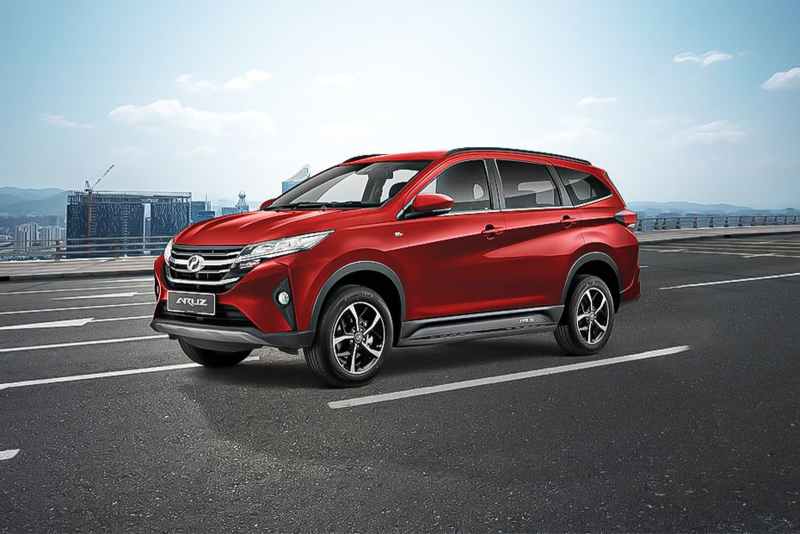
Perodua Aruz Review: A Practical and Safe SUV That Won’t Break the Bank
JamesJul 25, 2025
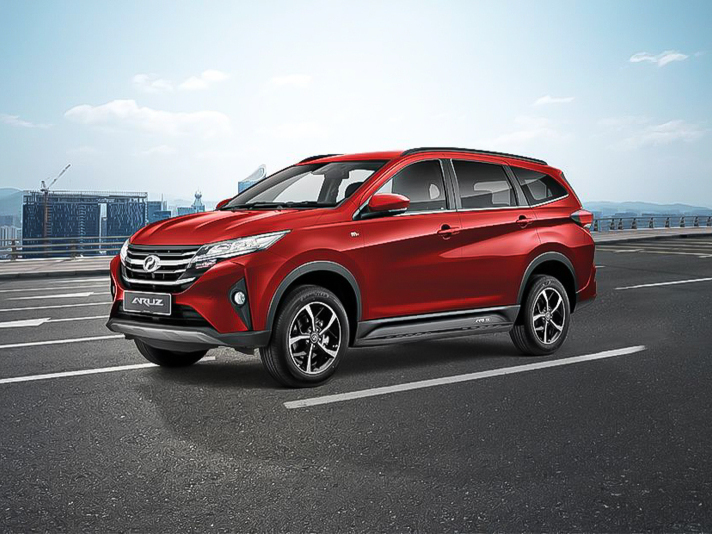
Perodua Aruz Interior Review: A Practical Cabin Despite Basic Materials
JamesJul 23, 2025
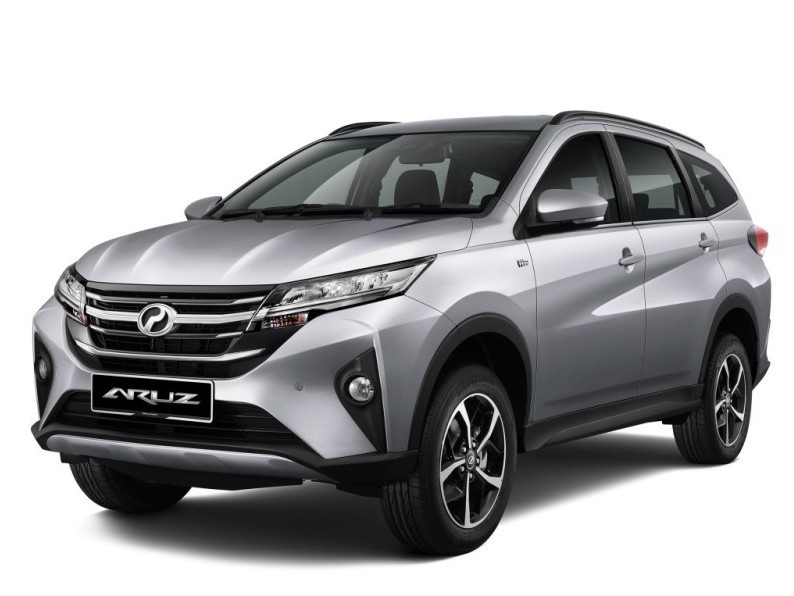
Review: Whether the fashionable exterior and flexible space of Perodua Aruz can become your ideal vehicle?
LienApr 9, 2025
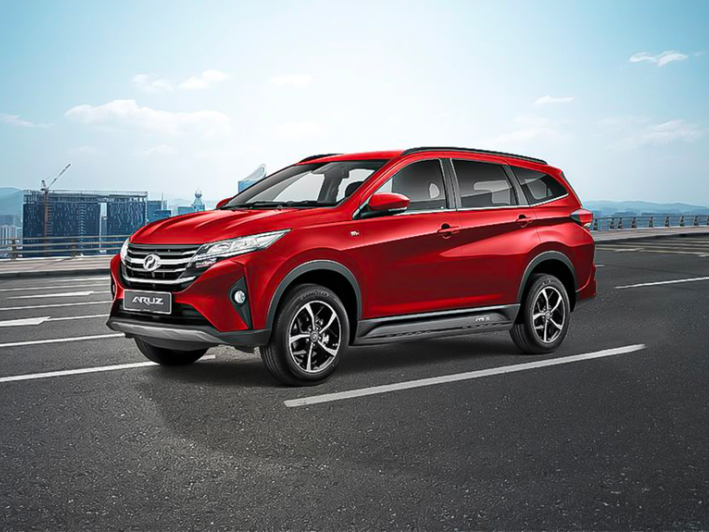
The starting price for the 2021 Perodua Aruz is RM 72,900, and there are two models available
LienJun 14, 2024

Perodua Axia Hits 790,000 Sales: What Makes It So Popular?
AshleyAug 12, 2025
View More












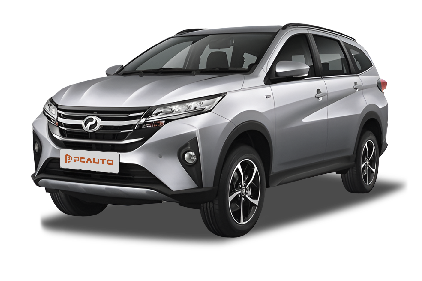





Pros
Cons